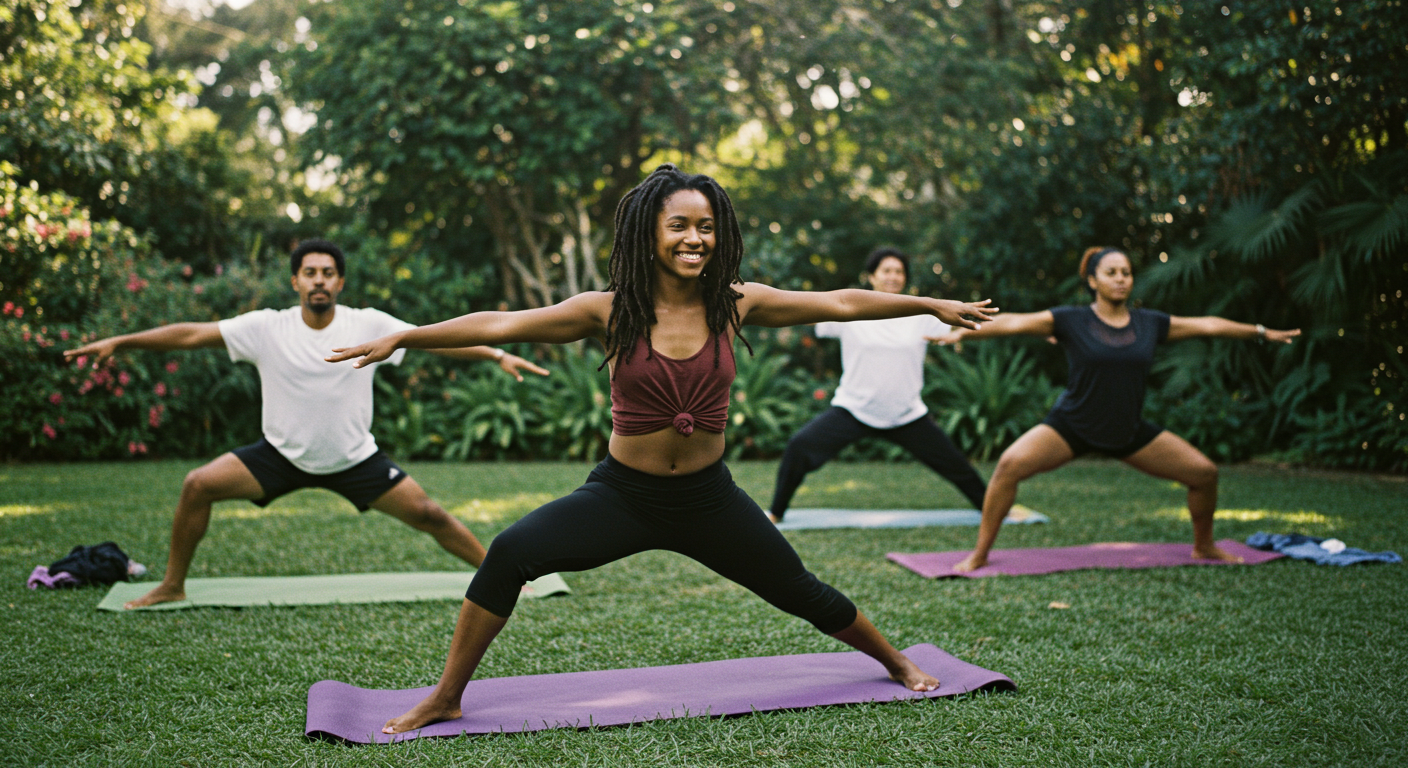Afro Yoga is an emerging wellness practice that fuses the fluidity and mindfulness of yoga with the rhythm, cultural expression, and ancestral spirituality of African movement traditions. Rooted in both inner stillness and outward energy, it offers a liberating and culturally resonant way to reconnect with the body and spirit.
1. What Is Afro Yoga?
Afro Yoga blends traditional African dance forms, breathwork, meditation, and yoga poses. It draws from the grounded footwork of West African dances, the circular torso movements of East Africa, and the meditative postures of Kemetic Yoga—an ancient Egyptian practice with hieroglyphic roots.
Unlike conventional yoga that often centers Eastern philosophy, Afro Yoga reclaims African spiritual and physical wisdom, honoring ancestors while tuning into present-day well-being.
2. Movement as Meditation
African dances emphasize rhythm, repetition, and community connection—elements that harmonize with yogic flow. Movements such as:
Pelvic undulations (linked to womb health and root chakra awakening)
Stomping or grounding footwork (to release stress and draw strength from the earth)
Arm and shoulder rolls (to open the heart and release tension)
These motions are performed in rhythm with traditional African drums, allowing participants to enter a meditative and expressive state simultaneously.
3. Breath and Ancestral Awareness
Afro Yoga emphasizes deep breathing not only for physical benefits but as a spiritual bridge. Breathing is seen as a connection to Chi or Prana—life force—and also as a way to honor the breath of those who came before us.
Practitioners often begin or end sessions with ancestral prayers, libations, or meditative silence, creating a sacred container for healing.
4. Community and Empowerment
Afro Yoga encourages group participation, mirroring African traditions where wellness and celebration are collective. It empowers people of African descent to see their bodies as sacred, strong, and beautiful—healing centuries of disconnection and trauma.
As Afro Yoga grows, it becomes more than just a workout—it’s a cultural and spiritual homecoming.



